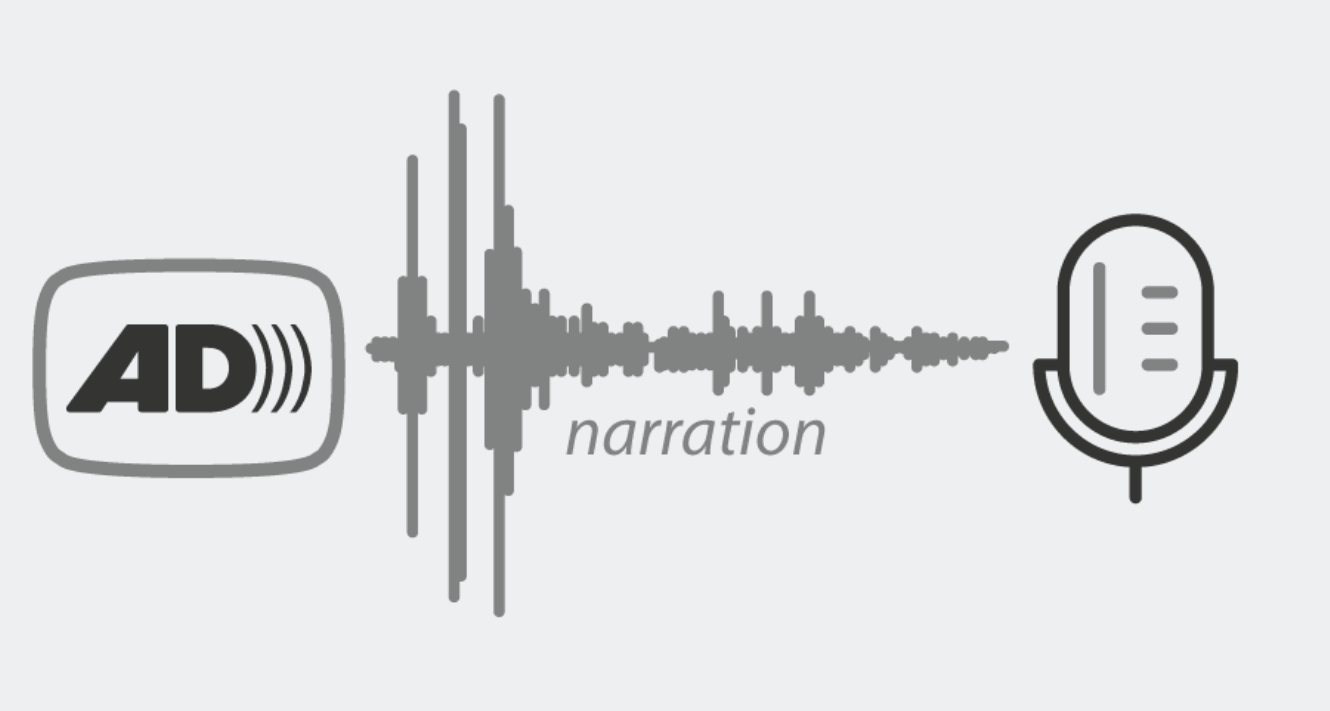
The most effective medium for conveying a message, offering instructions, and even engaging with your audience is video. I frequently have to spend a significant amount of time watching videos on streaming services. However, there aren't many that are actually usable by blind individuals. And with that, the purpose of this final piece in the series on disability etiquette is to offer advice on how to create videos that include people who have vision impairment or who are blind.
So, let's first establish what an audio description is and why it should be part of our video production. An additional soundtrack called "audio description" is added to a video with the intention of aiding viewers who are blind or have low vision about crucially important visual content. On-screen activities, characters, scene changes, text, and other visual aspects are all announced to the listener. A program's audio description adds to the main audio track. Typically, audio explanation is given during breaks or pauses in a video. Additionally, it is typically layered on top of instrumental music where that piece of music could be playing with no speech or singing.
NB: Audio descriptions can be referred to as video descriptions or descriptive audio
What Inspired Audio Descriptions?
Dr. Margaret Pfanstiehl and her husband Cody invented audio description in 1981, which was later recognized by the National Academy of Television Arts and Sciences and the LEAD Conference. This would give the blind and visually impaired persons an opportunity to benefit greatly from video content. The Audio Description Project
Various Audio Description Formats
There are two main types of audio descriptions, (standard descriptions and extended descriptions.) Standard descriptions flow naturally into your source audio's pauses. Extended descriptions add more audio time and pause the original movie to give you more time for the necessary descriptions. University of South Carolina. If the video you are describing does not contain a lot of pauses, longer descriptions can be helpful. They might come in handy, for example, if you're describing a video in which characters are shouting at one another and not paying attention to one another, which would naturally halt a discussion.
Enhance Your Video Content with audio Descriptions.
Aren't you resolved to include audio description in your videos now that we have talked a little bit about its history and significance? Let's examine the best approach. The good news is that with the right instruction, anyone can create audio descriptions. One thing to keep in mind, though, is how well you know the language you intend to produce them in. Why does this matter? Never let the audio descriptionist's voice detract from the performance it is describing. As a result, your voice should be able to match the tone of the video and change to reflect the feelings that the characters in the video are experiencing. However, you should be careful to avoid changing your voice frequently enough to give the impression that you are one of the characters. All this is possible to avoid when you are well versed in the language you are using for your description, as you will know the right expressions and phrases to use, and with what tone of voice. Let's look at some important aspects now:
Concentrate on the points that are crucial for your listener to understand. This covers things like character and speaker names, body language, scene changes, location, action, and more.
Insert descriptions in the intervals between free speech. The description should never get in the way of the listener understanding what the characters are saying; rather, it should improve their interaction with the video.
Give information a priority. It may be difficult to use free speech areas, especially if the video does not have many pauses. If feasible, try to keep your description brief in this situation. Alternatively, you might describe the action either before or after it appears on the screen.
Imagine that you are the listener's eyes. Avoid using phrases like "we see." Refrain from using terminology or technical terms and speak in the present tense. Use inclusive language, such as referring to someone by their character, unless it is specifically needed. Saying "a nurse enters the patient's room with a box of medication" as opposed to "a male nurse enters the patient's room with a box of medication," for instance.
I prefer watching videos with audio descriptions than those without. These explanations aid in my comprehension of the character's experiences and in engaging in conversation about the same film with my sighted peers. You can free a blind person from needing to ask a sighted friend what is going on the screen by providing audio descriptions. Both of these situations are advantageous because a blind person will understand exactly what the video creator intended for them to know, and a sighted person will be able to process what they are seeing on the screen without being sidetracked by trying to explain it to their blind companion. They can miss anything when attempting to describe the footage.
Check out some of the Jehovah's Witnesses' audio described content for a free audio description experience. Some, if not all, of the programming on streaming services like Apple TV, Amazon Prime, and Netflix include audio explanations. It's possible that you'd like to interact with them as well, but you could have to pay a streaming fee or activate a trial version.
Will you add descriptions in your videos?
